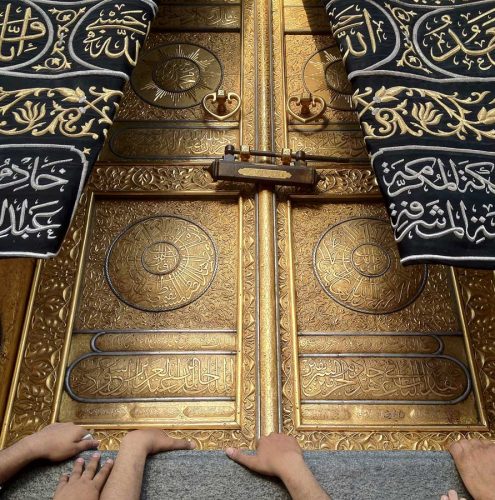While the iconic landmarks of Saudi Arabia and Egypt draw millions, a deeper exploration reveals a wealth of hidden gems and lesser-known sites that offer profound cultural experiences and breathtaking beauty. For the discerning traveler seeking authenticity and a departure from the typical tourist trail, these regions hold countless surprises, especially when considering their rich traditional and holy contexts.
Saudi Arabia: Unveiling Ancient Mysteries and Natural Wonders
Saudi Arabia, long a destination primarily for religious pilgrimage, is now opening its doors to a broader range of visitors, revealing a landscape rich in ancient history, dramatic natural formations, and vibrant local cultures. Beyond the bustling cities of Riyadh and Jeddah, and the holy cities of Mecca and Medina, lie extraordinary places waiting to be discovered.
•AlUla and Hegra: While gaining recognition, AlUla remains a place of profound historical significance that is still relatively off-the-beaten-path for many international travelers. Its centerpiece, Hegra (Mada’in Salih), is Saudi Arabia’s first UNESCO World Heritage site, featuring remarkably preserved tombs carved into sandstone cliffs by the Nabataeans, the same civilization that built Petra in Jordan [1]. Beyond Hegra, AlUla offers stunning rock formations, ancient Dadanite and Lihyanite ruins, and the atmospheric AlUla Old Town, a labyrinth of mud-brick houses [2].
•Edge of the World (Jabal Fihrayn): Located near Riyadh, this dramatic geological wonder offers panoramic views from towering cliffs that drop precipitously into an ancient ocean bed. It’s a popular spot for hiking and camping, providing a stark contrast to the urban landscape and an unforgettable natural experience [3].
•Rijal Almaa: Tucked away in the Asir region in the southwest, Rijal Almaa is a picturesque historical village renowned for its unique traditional architecture. The multi-story stone and mud-brick buildings, adorned with colorful window frames, reflect a rich cultural heritage and offer a glimpse into the region’s past [4].
•Farasan Islands: Off the coast of Jizan in the Red Sea, this archipelago is a pristine marine paradise. Known for its untouched coral reefs, diverse marine life, and migratory birds, the Farasan Islands offer exceptional opportunities for diving, snorkeling, and birdwatching away from crowded tourist spots [5].
Egypt: Beyond the Pyramids and Temples of the Nile
Egypt’s allure often centers on its monumental ancient sites along the Nile. However, venturing beyond Luxor and Giza reveals a different side of Egypt, from serene oases to vibrant local communities and less-explored archaeological treasures.
•Siwa Oasis: A tranquil oasis in the Western Desert, Siwa offers a unique cultural experience distinct from the rest of Egypt. Known for its date palms, olive groves, and salt lakes, it’s home to the ancient Shali Fortress, Cleopatra’s Spring, and the Temple of the Oracle of Amun, where Alexander the Great sought counsel [6]. Its isolation has preserved a unique Berber culture and dialect.
•Wadi El Hitan (Valley of Whales): A UNESCO World Heritage site in the Western Desert, Wadi El Hitan is an extraordinary paleontological site containing invaluable fossil remains of ancient, now extinct, suborder of whales. It provides compelling evidence of the evolution of whales from land-based animals to ocean dwellers, offering a unique blend of natural history and desert landscape [7].
•Dahab and the Sinai Peninsula: While popular for diving, areas of the Sinai Peninsula, particularly around Dahab, offer opportunities for more authentic experiences beyond the main tourist resorts. Exploring the Bedouin culture, hiking in the colored canyon, or visiting remote monasteries like Saint Catherine’s Monastery (a UNESCO site) can provide a deeper connection to the region [8].
•Abydos and Dendera: While not entirely unknown, these temples are often overshadowed by the more famous sites of Luxor. Abydos, dedicated to Osiris, is considered one of the most important archaeological sites in Egypt, featuring the unique Seti I temple with its King List. The Temple of Hathor at Dendera is exceptionally well-preserved, with vibrant astronomical ceilings and intricate carvings [9]. These sites offer a more intimate and less crowded experience of ancient Egyptian artistry and religious devotion.
Holy Sites: Discovering Deeper Connections
https://aqsahajj.com/choosing-your-hajj-umrah-package-comparing-budget-standard-and-custom-options/For those seeking spiritual journeys, exploring the less-trodden paths within and around holy sites can offer profound personal insights and a richer understanding of their significance.
•Jabal al-Nour (Mountain of Light) in Mecca, Saudi Arabia: While the Kaaba is the central focus of Hajj and Umrah, a visit to Jabal al-Nour, where Prophet Muhammad (PBUH) received his first revelation in the Cave of Hira, offers a powerful spiritual experience. The challenging climb and the serene cave provide a moment of reflection away from the crowds of the Grand Mosque [10].
•Quba Mosque and Masjid al-Qiblatayn in Medina, Saudi Arabia: Beyond the Prophet’s Mosque, these two mosques hold immense historical and religious importance. Quba Mosque is the first mosque built in Islam, and Masjid al-Qiblatayn is significant as the place where the direction of prayer (Qibla) was changed from Jerusalem to Mecca [11]. Visiting these sites offers a deeper understanding of early Islamic history.
•Coptic Cairo, Egypt: This historic area in Old Cairo is a treasure trove of early Christian history, featuring the Hanging Church, the Church of St. Sergius and Bacchus (where the Holy Family is believed to have stayed), and the Ben Ezra Synagogue. It offers a unique perspective on Egypt’s multi-religious heritage [12].
•Mount Nebo, Jordan (near Jerusalem): While not in Saudi Arabia or Egypt, Mount Nebo is a significant holy site for Christians and Jews, believed to be the place where Moses viewed the Promised Land before his death. The panoramic views of the Jordan Valley, the Dead Sea, and Jerusalem are breathtaking, and the site offers a contemplative experience [13].
Exploring these unique and off-the-beaten-path destinations allows travelers to delve deeper into the rich tapestry of history, culture, and spirituality that defines Saudi Arabia, Egypt, and the broader region of traditional and holy sites. It’s an invitation to step beyond the familiar and discover the extraordinary.

